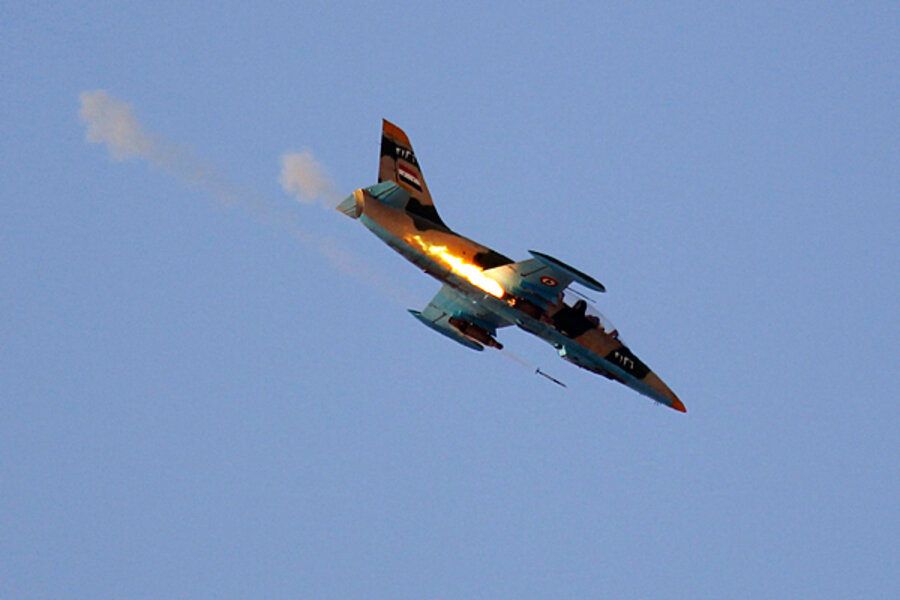Targeting Syria: How big a concern are its air defenses?
Loading...
| Washington
Should the US military be worried about Syria’s air defenses?
That’s a key question as the Pentagon readies for possible air strikes on Syria in retaliation for the use of chemical weapons by the Bashar al-Assad regime.
After all, Syria is not Libya, where US and allied warplanes could attack with relative impunity. Stung by repeated Israeli Air Force incursions the Syrian military has acquired a fairly robust air defense infrastructure of largely Soviet-built missiles and guns. Chairman of the Joint Chiefs Gen. Martin Dempsey called it “advanced” in a July letter to Congress.
Prior to the beginning of the current civil war the Syrian government had 25 air defense brigades with some 150 batteries of surface-to-air missiles, according to the Center for Strategic and International Studies. These included aging low-altitude Soviet-era systems, such as the S-125 Pechora; the obsolete medium-to-high altitude S-75 Divna; and 2 batteries of very-long-range S-200 Divnas.
These systems provide a base of overlapping coverage for much of the country. They are clustered in particular around Damascus and other population centers, key air bases, and the Mediterranean coast and Golan Heights, according to a detailed technical report on the subject prepared for an Australian defense think tank.
These main systems have been upgraded over the years but they are well-known to the US military via captured Soviet models and are vulnerable to US countermeasures and air-launched missiles which hone in on radar emissions.
In recent years Syria has tried to buy newer big air defense systems from Russia but hasn’t been able to come up with the needed cash. It has likely had to move some of its air defense batteries to avoid their capture by rebel forces. This means defensive missiles are more concentrated then ever around regime-controlled areas, leaving open corridors for US airpower to exploit.
Syria’s short-range and man-portable air defense weapons are somewhat more modern than its bigger missile batteries. These can be highly dangerous to modern warplanes, as shown by the Soviet experience with US-supplied Stinger missiles in the hands of Afghan rebels. In particular Syria has acquired the Pantsir-S1, known to NATO as the SA-22 Greyhound, a truck-based short-range Russian gun and missile system that entered service in 2003.
“Syria has one of the most sophisticated Soviet-designed air defense systems outside of the former Eastern Bloc countries. However, it does not include the most advanced air defense and sensor systems developed by the Soviets. The Syrian system appears flawed and some analysts doubt the reliability and efficiency of the counter control network,” concludes globalsecurity.org.
These defenses would likely have limited effect on US strikes composed of cruise missiles and/or long-range stand-off weapons fired by aircraft outside Syrian airspace. However, if the US wants to impose a no-fly zone on Syria, it would have to mount a much larger effort that would involve numerous manned aircraft and repeated strikes, raising the risk of American losses.
Syrian air defense forces could chose to remain dormant during initial operations, and then surprise US forces in subsequent days by turning radars on in an effort to lock-in and catch a US aircraft unaware.
“Syrian [air defense] is well-equipped, but it is old and poorly maintained. Against close-range targets, [it] is still effective, as demonstrated by the shootdown of Turkish reconnaissance aircraft in July 2012. Against long-range targets, [it] is ineffective, as demonstrated by recent Israeli air strikes near Damascus,” said the Institute for the Study of War in a May analysis of Syrian capabilities.








